Donald Trump is generally so unguarded that it might not make a difference whether the cameras are rolling or not. Even so, it was a “hot mic moment” that best captured his approach to Vladimir Putin.
“I think he wants to make a deal for me,” Trump told French President Emmanuel Macron during the European summit at the White House this week. “Do you understand that? As crazy as it sounds.”
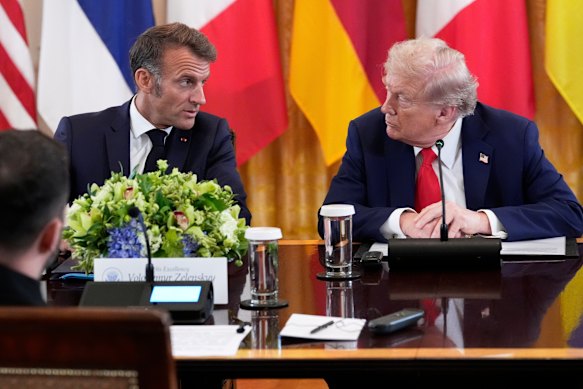
The US president’s seemingly unshakeable faith in his relationship with his Russian counterpart is central to what comes next, after a flurry of unprecedented diplomatic engagements – Trump-style – to try to bring about an end to the war in Ukraine.
Analysts are divided as to how much was achieved by Trump’s red carpet rendezvous with Putin in Alaska and subsequent summit with European leaders, including Ukraine’s Volodymyr Zelensky, at the White House. Most, however, err on the side of more good than harm.
They point to a closer alignment between the US and Europe on key questions about security guarantees for a post-peace deal Ukraine, even if the final form is unresolved. They suggest there is a more realistic approach to making a deal than under the Biden administration, including accepting Putin will have to be at the table. And they say Putin is on notice that he cannot deal with Trump alone; Europe is an immutable part of the equation.
“The path to a sustainable peace in Ukraine is steep, and it is rough,” Daniel Fried, a former US ambassador to Poland and former assistant secretary of state for Europe, said at an Atlantic Council event in Washington this week. “But it exists where nothing like this existed several weeks before.”
That was the good news, he said. “The bad news is the Russians, based on the evidence so far, are having none of it. They are a bit on the defensive, but they are resisting, they haven’t given anything. There will be a moment of truth with the Russians, and we have to push back hard.”
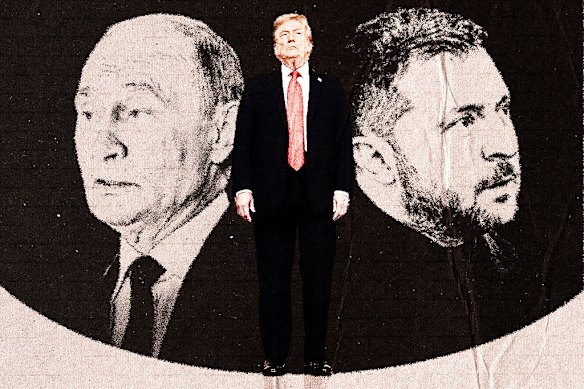
However, every stakeholder in this conflict now faces difficult choices about what comes next. For Ukraine, it is compromise. For Europe, taking responsibility. For Putin, how much he can push. And for Trump, where he will draw the line against a man he still claims to trust.
Lines on a map
Flying under some people’s radar – though not Fried’s – at the White House gathering was Finnish President Alexander Stubb, who is just shy of 18 months in office. He has quickly bonded with Trump over golf – they played together in Florida earlier this year, and Stubb recently told The Wall Street Journal they talked about Putin at lunch. Trump asked if he could trust the Russian president. “You cannot,” Stubb said he replied.
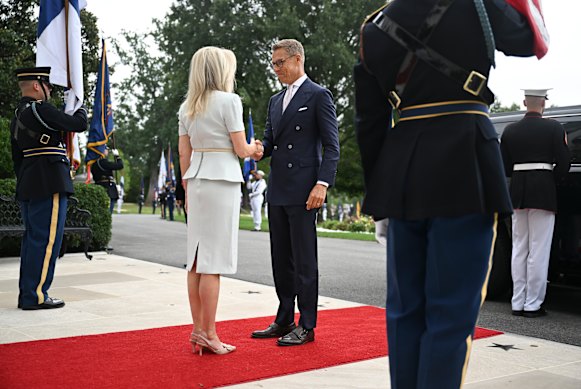
At the start of Monday’s meeting (Tuesday AEST), with the cameras in the room, Trump gave each European leader a chance to say their piece. Stubb brought up the Winter War; the Soviet Union’s invasion of Finland in December 1939, by which many scholars believe Joseph Stalin sought to conquer the entire country. The Finns fought back hard – alone, with the British and French busy fighting Nazi Germany – and the Soviets ended up taking about 10 per cent of Finland, including its second-largest city.
Speaking to this masthead after the Atlantic Council event, Fried says Stubb made an important, if subtle, point. “I know Stubb,” he says. “What he was saying was: even if in the end Ukraine has to accept a bitter territorial settlement, we’ve been there. We get it. We survived.”
“There’s a big difference between accepting permanent loss of territory and accepting a ceasefire line or a demarcation line. But Stubb was making the point [that] sometimes a bitter peace is what you’ve got. And Americans shouldn’t talk in those terms. But Finns can. They’ve been there with the Russians. That doesn’t mean the Finns are saying ‘just give up’.”
Zelensky, naturally, has been reluctant to cede territory; his country’s constitution effectively binds him to maintain that Crimea, annexed by Putin in 2014, will always be part of Ukraine, for example. This has angered Trump, who blames then US president Barack Obama for “allowing” that invasion, and who began the week telling Zelensky via TruthSocial to give up on Crimea and NATO membership for Ukraine.
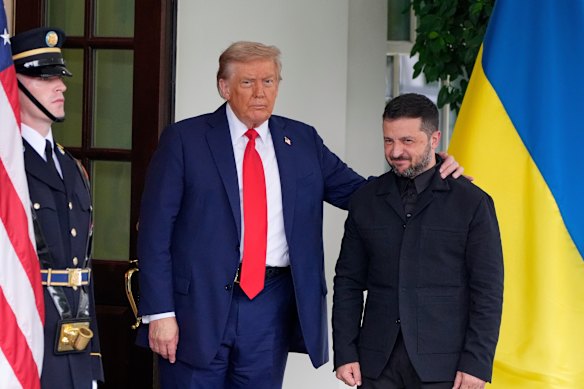
Michael O’Hanlon, director of foreign policy research at the Brookings Institution, a Washington think tank, argues Trump’s strategy is in some ways better than his predecessor Joe Biden’s as it’s more grounded in the battlefield reality of the war.
“Ukraine’s simply not going to win back most of the territory,” he says. “People knew that before, but they weren’t willing to base policy on that premise, and now they are.”
Trump has awkwardly spoken about “land swaps” between Russia and Ukraine, talk of which was all but absent from the gathering in Washington. Putin wants around 6500 square kilometres of territory currently controlled by Ukraine in the easterly Donbas region, with speculation he might be prepared to give up a smaller parcel of land elsewhere deemed less critical.
O’Hanlon says none of that is realistic, and doubts Putin is interested in a meaningful swap in any case. “He is the guy who has reminded us in this war that possession is 90 per cent of the law.” On the Ukrainian side, any compromise is likely politically unpalatable.
“How does Zelensky say to his own people that certain parts of his country are more important than others?” O’Hanlon queries. “It’s a really hard thing to ask a democratically elected leader to do – and Putin’s not even making that kind of offer.”
Ultimately, he says, the borders are “going to have to be something very close to the current line of control... nobody is serious about land swaps”.
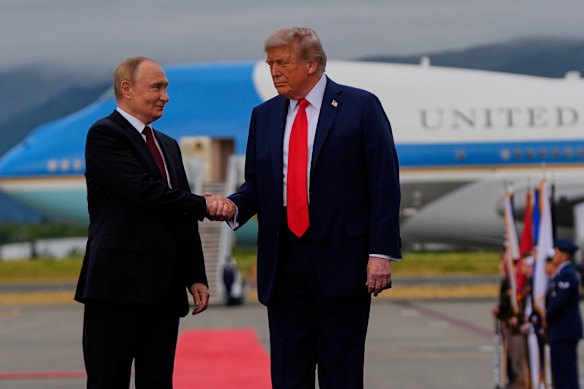
The clock is ticking
The leaders left Washington with two main commitments: that they would knock heads over the details of a European-led security guarantee for Ukraine, with a potential US backstop, and that Putin and Zelensky would meet – date and location TBA. Since then, the Kremlin has played down the prospects of an imminent leaders’ meeting, suggesting instead that talks might start at a lower level and move upwards.
This is antithetical to Trump’s way of doing business; he wants the top dogs in the room or on the phone. On Friday, Zelensky backed him up, saying in a video message that progress was only feasible at the leaders’ level, and accusing Putin of “trying to wriggle out of holding a meeting”. “The signals coming from Russia are simply outrageous,” he said. “They don’t want to end this war.”
And why would they? Russia enjoys a battlefield advantage, and Ukraine’s defensive lines are over-stretched. Weapons from the west can help, but the main problem is a lack of manpower.
Jennifer Kavanagh, the director of military analysis at the isolationist Defense Priorities think tank, takes a hard-nosed view about the likely path from here and found the talkfest at the White House this week frustrating. Trump’s language was “vague”, she says, while the Europeans were enthusiastic but didn’t appear to elicit specific commitments from the US. Meanwhile, the clock is ticking.
“More time does not help Ukraine,” says Kavanagh. “A lot of this conversation that’s happening in Washington seems to be divorced from reality. Whatever’s decided here has to be acceptable to Putin who has the advantage on the battlefield. All we were doing was kicking the can down the road and ignoring the war. It’s not like that makes me happy.”
Kavanagh gives the Putin-Zelensky meeting a 15 per cent chance of happening. It would have to be somewhere Putin is not liable for arrest; Budapest and Geneva have been floated as options. It would also be a risky move in any case; Zelensky has already survived numerous assassination attempts. “To quote The Godfather,” O’Hanlon says, “somebody would have to provide security.”
A trilateral may be more likely; O’Hanlon points out Zelensky would be obliged to attend if Trump wanted him to, while Kavanagh says Putin may feel pressure to show up if the other two are there.
Reality or fantasy?
Protections for a post-deal Ukraine remain opaque but came into slightly clearer definition at the Washington meeting. Ukraine would not get anywhere near NATO and its Article 5 mutual defence guarantees, but it might be granted some sort of similar arrangement. Trump equivocated on whether US troops might join a European Union-led force,. But he raised the prospect of “air power” involvement.
What could this look like? O’Hanlon, who has written about the subject, says a plausible scenario would be a combination of European boots on the ground as trainers and observers, backstopped by an “American rapid reaction force” likely based in Poland. “I don’t think it’s a combat force, I think it’s a tripwire,” he says of the European deployment. “I think it’s thousands of people, not tens of thousands.”
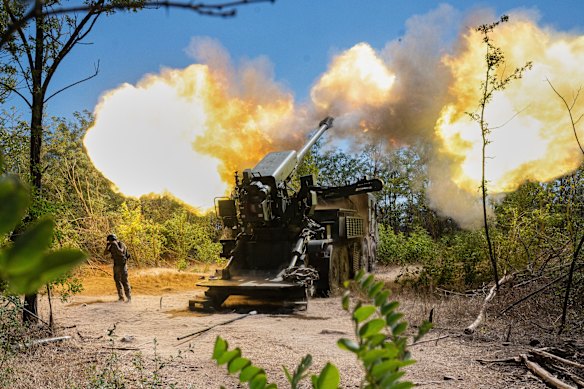
An alternative plan for US involvement might be a security assistance contract with Ukraine that provides for several hundred American private sector contractors to be on the ground to provide air and missile defence.
The experts acknowledge Putin can refuse to accept such an arrangement. He would likely push for a United Nations observing force with no troops from any NATO state.
“Then it gets a little more complicated,” O’Hanlon says, though it might still be better than continuing the war. “You should not concede those [things] up front. I’m saying things to you now that I would not say if I were a government official. As long as Ukraine doesn’t have its arms supply cut off or its military constrained, then a ceasefire or peace deal that does not include a western strategic guarantee or reassurance is still better than nothing – better than no peace deal at all.”
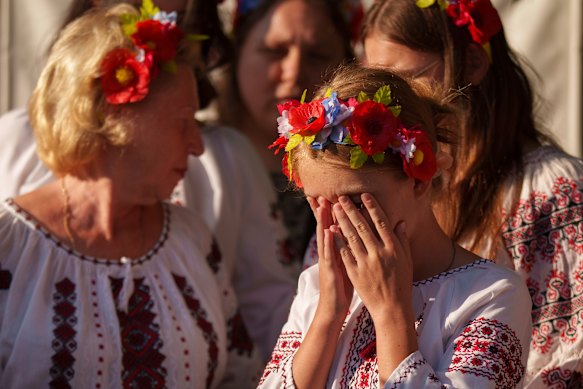
Kavanagh, the military analyst, has a more pessimistic view of what is achievable. Anything resembling an Article 5-like security guarantee is a “non-starter” for Putin, she says, and there is little military or economic pressure that will make him change his calculus. The guarantees discussed in Washington are “a waste of time and an exercise in fantasy”, she says.
Instead, Kavanagh says Ukraine will likely have to adopt a position of neutrality or “non-alignment” with the possibility of a western commitment to providing arms or logistical support in the event of another Russian attack, but no deployment of troops.
Kavanagh proposes a land-based version of the “porcupine strategy” proposed for Taiwan, whereby Ukraine has just enough defensive capability to deter another invasion, but not nearly enough to launch an offensive against Russian forces. That would involve arming Ukraine with mines, defensive fortifications, a drone stockpile and at least a year’s worth of ammunition, she says – enough to “make it clear that the costs of another invasion would be very high”.
Loading
The risk, says Kavanagh, is that while Trump and the Europeans debate the details of a settlement, Ukraine’s front lines collapse. “Then the choice isn’t really security guarantees or no security guarantees – you’re in an existential situation.”
Others are more optimistic. Fried, the former diplomat, notes the much-improved dynamic between Trump and Zelensky, and the fact that high-level talks have continued during the week within the so-called “coalition of the willing” about how to make a security guarantee feasible.
“Zelensky comes out of that meeting in much better shape,” Fried says. “He wasn’t squeezed and threatened. And Trump put on the table something critical that wasn’t on the table before, which is security for Ukraine in a way that could actually work. That’s a big deal.”
Fried knows Putin won’t accept anything unless he’s forced to. “But one impossible problem at a time.”
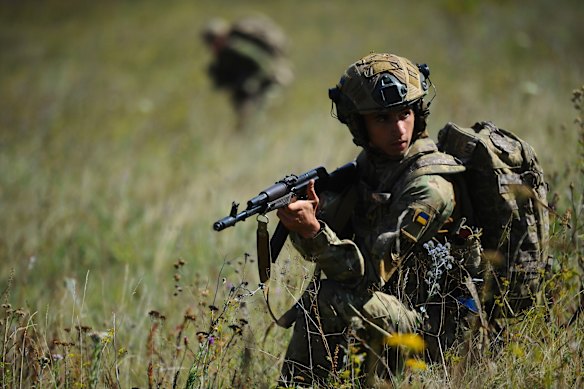
Trump’s grand bargain
Donald Trump also faces some tough choices. Since returning to office, he has boasted of his relationship with Putin as an asset; a necessity to making a deal to end the war. His faith in Putin – the one he was whispering to Macron about in Washington – has ebbed and flowed. What was once certainty of the Russian’s desire for peace has given way to a creeping realisation that he may be playing for time. Sometimes Trump credits his wife, First Lady Melania Trump, for aiding him in this journey.
But this has yet to translate into any new pressure on Putin, despite the president’s promises of “very severe consequences” if nothing came of last week’s meeting in Alaska. Deadlines have come and gone; at Monday’s meeting, Trump again brandished his favourite timeline of “one or two weeks” to see if progress was possible.
Loading
Fried says this indulgence will have to end, though he’s comfortable if Trump wants to play it out. “Let him offer Putin something. I don’t think it’s going to work. Trump will at some point or another have to draw that line with Putin,” he says.
“Putin is going to say ‘no’ until Trump makes it clear that’s over. Trump could say: Vladimir, I did everything I could for you, and you have a pretty good deal on the table. But that’s it buddy, the war’s gotta end now. If it’s ‘no’, then I am going to rip out the guts of your economy, I’m going after your oil sales, and I’m slamming all the Russian banks … the Chinese can’t save you from what’s coming. We have cards to play. It’s not a fantasy.”
Fried was appalled by the Trump-Putin meeting in Anchorage, describing it as a “hot mess”, and he was equally aghast when US Secretary of State Marco Rubio began talking down the threat of sanctions because they would spoil the atmosphere for talks. “What are you talking about man?” Fried shrieks. “He knows better.”
On the other hand, O’Hanlon says rolling out the red carpet for Putin – though stomach-turning – might just be the price of admission for getting a resolution.
Loading
“I think we’re going to have to offer Russia partial rehabilitation in the community of nations if we’re going to ever get to a peace deal,” he says. “Putin’s still going to be president of Russia when this war ends and Russia’s still going to be a nuclear-armed country that we can’t trifle with.”
Kavanagh adds: “The reality is if you want to end a war, you have to talk to your adversary. Ultimately, that’s required.”
